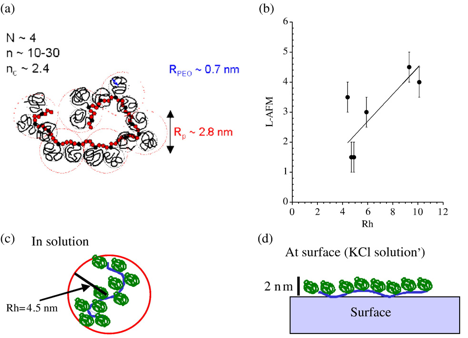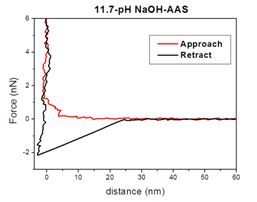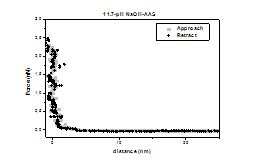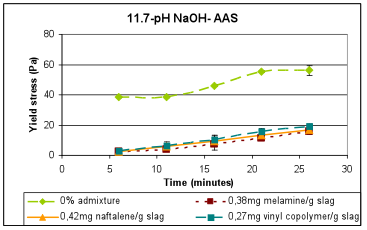Interparticle Forces and Superplasticizers in Cement Pastes
Superplasticizers are widely used today in the cement and concrete industry nevertheless the mechanisms through which they act on the cement phase in concrete remain poorly understood. The origin of the effect, which Superplasticizers have, comes from decreasing the attractive forces between cement particles. The main objective of this work was to extend the application of interparticle force concepts to cement suspensions and in particular the influence of different superplasticizers. The basis of the theory of colloidal stability is that the total interaction force between macroscopic bodies can be obtained by the addition of the individual forces, the attractive Van der Waals and the electrostatic and steric repulsions. By combing this with a microstructural model of the particles in the suspension or paste a Yield Stress Model (YODEL) has been developed [2]. This can predict the yield stress of the suspension from basic system parameters such as the particle size distribution, solids volume fraction (cement to water ratio) and the interparticle forces.
Portland Cement and model MgO systems (SUPERPLAST EU project)
With the above philosophy we have had considerable success in furthering our understanding of the action of superplasticizers on the rheology of cement and concrete. In the European project SUPERPLAST [1] we produced superplasticizers with varied architectures and we have been able to show the important structural features of the macromolecules that lead to a successful superplasticizer or water reducing agent. Both polycarboxylate and lignosulfonate polymers have been investigated. Using both non-reactive model MgO powders and three different types of ordinary Portland cement (OPC), the adsorption behaviour and the effect on the rheological properties of these two important superplasticizer families have been used to further develop a conceptual model for superplasticizer — cement behaviour. The key factors are shown to be the effective adsorbed polymer thickness measured by atomic force microsocpoy (AFM) and the induced surface charge which can be influenced by the polymer architecture, the pore solution composition and the initial particle surface charge. The conceptual model of a polymer’s interaction with a powder surface, used in conjunction with a quantitative yield stress model (YODEL), was successful in describing the rheological properties of the cement slurries with different polymers. This was confirmed by rheology measurements on the model MgO slurries. Two commercial products were consequently designed and successfully launched on the market, by the industrial partners in the project, as a consequence of this deeper understanding of the adsorption behavior and the influence on the rheological properties.

Alkali Activated Slag Pastes and Model Alumina Systems
Collaboration with Dr. M. Palacios ( ETHZ & CSIC) and Prof. F. Puertas (Eduardo Torroja Institute (CSIC, Madrid, Spain (www.ietcc.csic.es) over several years has focused on the effect of superplasticizers on alkali activated blast furnace slag cements. Alkali-activated slag (AAS) binders are obtained by a manufacturing process less energy-intensive than ordinary Portland cement (OPC) and leads to lower greenhouse gas emissions. These alkaline cements allow the production of concretes with high mechanical strengths and durability comparable to those produced with OPCs. The adsorption of different superplasticizers (naphthalene-based, melamine-based and a vinyl copolymer) on the slag particles in AAS pastes have been studied. Adsorption of the above admixtures was found to be independent of the pH of the solution used and significantly lower than on OPC pastes by a factor of between 3 to 10.The only admixture observed to affect the rheological parameters in 13.6-pH NaOH-activated slag is the naphthalene-based admixture due to its structural stability in such extremely alkaline media. Dosages as low as 0.42 mg naphthalene/g slag are observed to induce the maximum reduction in yield stress (98%) [3]. Also work on slag-OPC blends and the use of polycarboxylate superplasticizers have also been carried out [4].
Yield stress evolution in 11.7-pH NaOH-AAS pastes containing different superplasticizers, only the Naphtalene based additive maintains its effectiveness at higher pHs 13.6 because of its chemical stability
To confirm the stabilization mechanism of the admixtures studied, further studies on the adsorbed layer thickness using colloidal probe AFM and confrontation with the analytical yield stress model (YODEL)[5] have been made. AFM measurement were made on sintered slag substrates and model sintered alumina substrates – showing very similar adsorbed layer thicknesses for both substrates. The lowest thickness was measured for the naphthalene-based admixture (1.3 nm), the highest for polycarboxylate-based admixture (2.8 nm). To model the interparticle force interactions an effective Hamaker constant was computed from dielectric properties measured on a dense slag sample produced by spark plasma sintering. From the AFM force measurements we conclude that the dispersion mechanism for all superplasticizers studied is dominated by the steric repulsion with the electrostatic contribution being in all cases less than 25% and in some cases negligible[5]. Results were then used in the yield stress model, YODEL,[2] to predict the yield stress with and without the superplasticizers. Predictions of the yield stress agreed well with experimental results. This insight into the stabilization mechanism for alkaline-activated slag pastes will now allow us to better design superplasticizers for this type of “green” cement.
 |
 |
| Typical force-versus-distance curves in absence of superplasticizer between slag surfaces | Typical force-versus-distance curves between slag surfaces in presence of 50mg/l naphthalene admixture |
